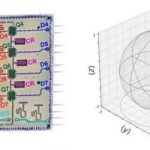Google Researchers Answer: What’s in a Time Crystal and how do you make them?

(IEEE.Spectrum) A time crystal is a new kind of matter that bears an uncanny resemblance to a perpetual motion machine. Its parts can theoretically move in a repeating cycle without consuming energy for eternity, like a watch.
Researchers at Google Quantum AI and their colleagues reveal they have created time crystals using Google’s Sycamore quantum computing hardware, findings they detailed online Nov. 30 in the journal Nature.
In the new study, the researchers used a 20-qubit system not for computation, but to realize time crystals.
In the interview summarized here by IQT News, IEEE Spectrum spoke with Google staff research scientist Kostyantyn Kechedzhi and Google senior research scientist Xiao Mi, who conducted much of the research on the theoretical and experimental sides. Click on the source link for the indepth discussion.
Spectrum: What might you compare time crystals to in nature?
Kostyantyn Kechedzhi: A crystal is a system of many atoms that, due to mutual interactions, organize themselves into a periodic pattern in space. A time crystal is a quantum system of many particles that organize themselves into a periodic pattern of motion—periodic in time rather than in space—that persists in perpetuity.
The key novelty of a time crystal is the periodic motion of a system of many objects interacting with each other.
Spectrum: How comparable are your time crystals to perpetual motion machines?
Kechedzhi: The time crystals observed in our experiment do not absorb any net energy from the pulses used to drive their behavior. This is perhaps why they are often compared to perpetual motion machines.
However, perpetual motion machines are expected to produce work without an energy source, which would violate the laws of thermodynamics. In contrast, the motion of a time crystal does not produce work without an energy source and therefore does not violate physical laws.
Spectrum: What applications might time crystals have?
Kechedzhi: A time crystal is, like ferromagnetism or superconductivity, an example of spontaneous symmetry breaking, or spontaneous order. For instance, a ferromagnet is essentially a system of much smaller magnets whose magnetic poles all point in a single direction, and in this sense are ordered. Symmetry is said to be “spontaneously” broken in such a state, since in normal matter the poles all point in random directions. Stable examples of spontaneous symmetry breaking, as seen in ferromagnetism or the vanishing electrical resistance of a superconductor, often have significant technological value.





















